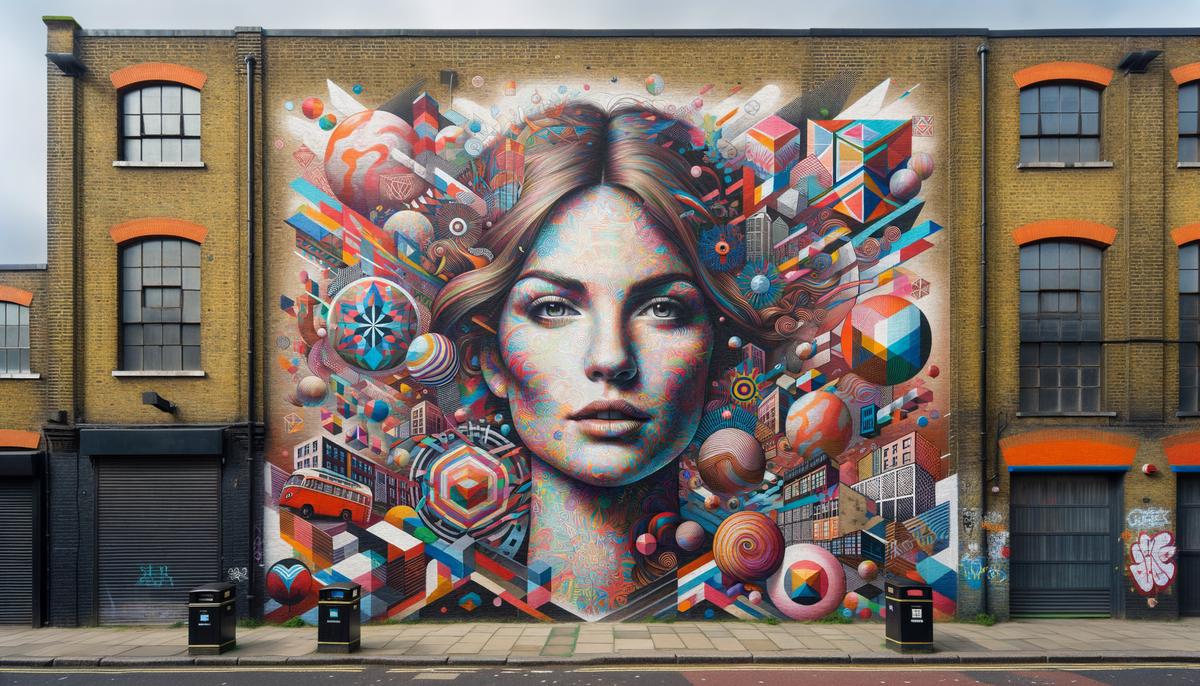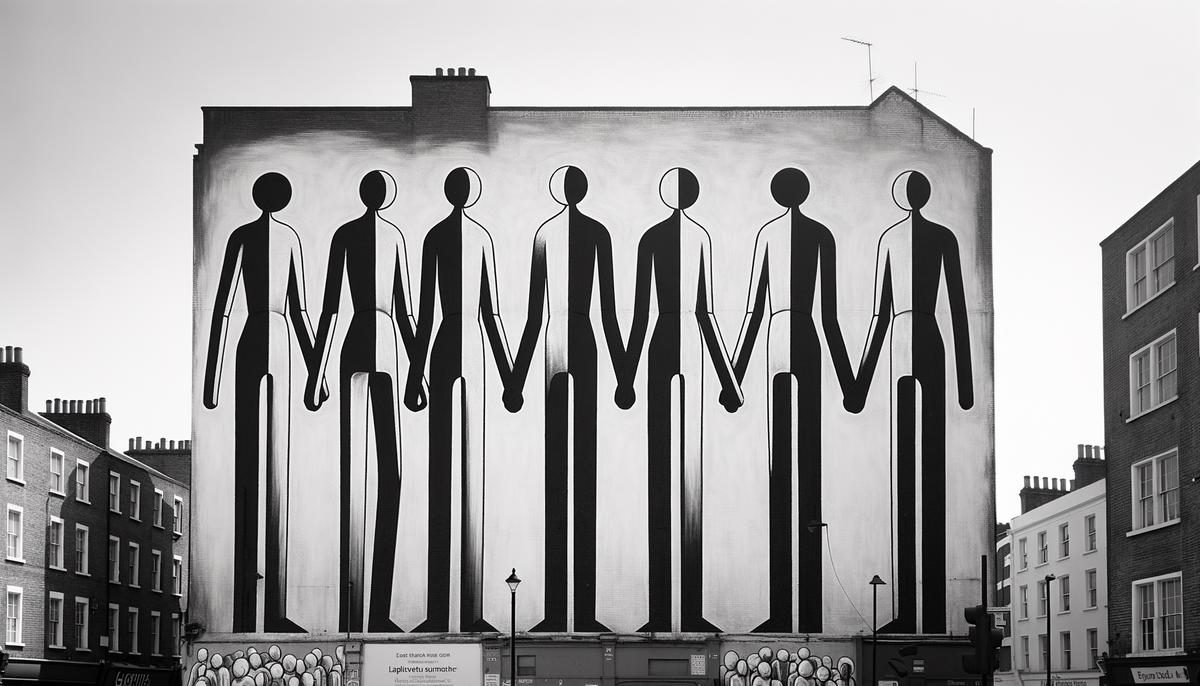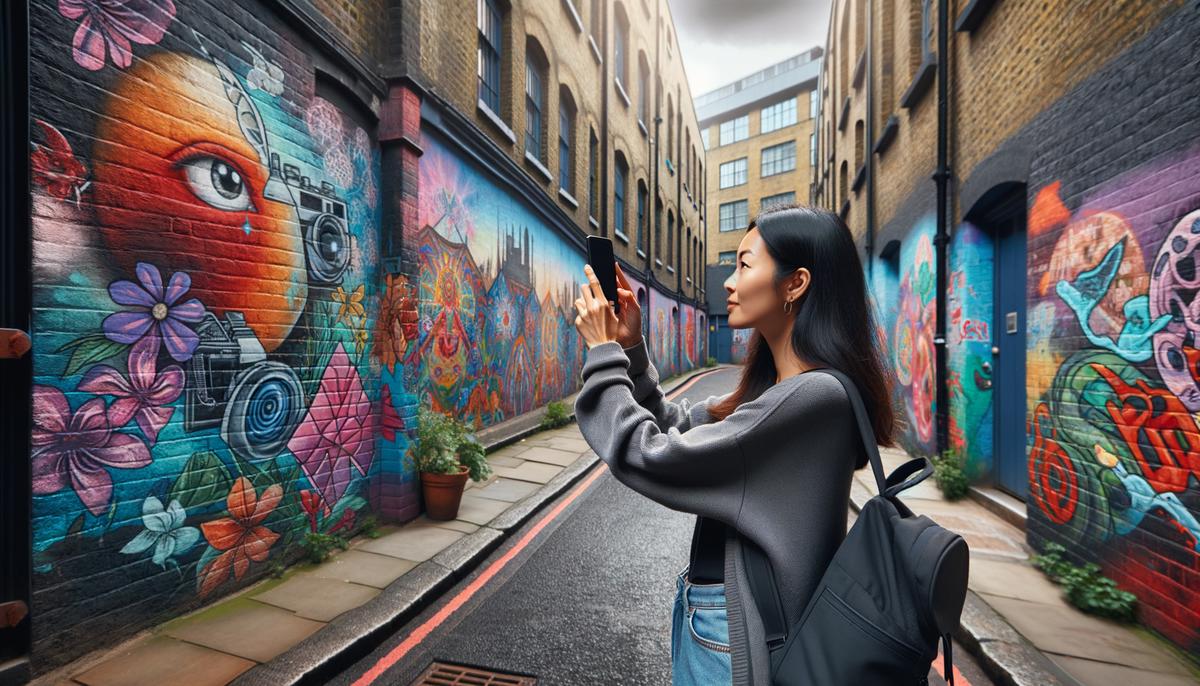Understanding the Landscape of London Street Art
London's street art scene is a dynamic and colorful exploration of the city's social, historical, and cultural contexts. Neighborhoods such as Shoreditch, Brick Lane, and Camden Town have become the epicenters of this creative explosion, attracting artists and enthusiasts from around the globe.
The beginnings of street art in London can be traced back to the late 20th century when urban areas began to serve as canvases for artists expressing themselves outside conventional galleries. This movement quickly gained momentum, with East London becoming a particularly vibrant hub owing to its industrial past and diverse communities.
Shoreditch, once known for its derelict buildings, has transformed into a living gallery. The area's old factories and warehouses provide ample space for murals, while the streets buzz with the energy of creativity. Here, it's common to find art that spans a wide range of styles and themes, from political commentary to abstract expressionism.
Brick Lane, often referred to as the heart of London's street art scene, is a testament to the area's rich multicultural heritage. Artworks here are ever-changing, reflecting shifts in societal attitudes and the ebb and flow of cultural influences. The street is a patchwork of colors, with pieces by both established and emerging artists living side by side.
Camden Town, with its bohemian spirit, offers a different vibe. Its markets, bustling with tourists and locals alike, are backdropped by street art that ranges from large-scale portraits to intricate stencils. The creativity in Camden isn't just confined to the walls; it spills over into the area's shops, cafes, and music venues.
The allure of London's street art lies in its accessibility. Art is no longer something to be experienced by the few; it is out there on the streets for everyone to enjoy. This democratization of art has fostered a sense of community and given a voice to those who might otherwise not be heard.
Street art in London is constantly evolving. Artists respond to the city's social changes, and their work often features a dialogue with viewers. This open-ended conversation has made London a magnet for street artists worldwide, keen to leave their mark on the city's fabric.
Touring these neighborhoods not only offers a visual feast but also provides insights into London's complex identity. Each piece of street art tells a story, whether it's of political unrest, love, hope, or frustration. Exploring these artworks gives us a glimpse into the minds of artists while also reflecting the city's hectic and ever-changing character.
As street art continues to grow in popularity, its influence on London's cultural scene cannot be overstated. It challenges perceptions, inspires creativity, and transforms mundane urban landscapes into vibrant expressions of humanity. By taking a closer look at the street art adorning the city's walls, we engage with a vital and dynamic aspect of London's soul.

Identifying Key Street Art and Artists in London
Diving deeper into London's street art panorama, one can't help but be captivated by the stories etched on urban canvases. Key players in this visual symphony include Banksy, Stik, and ROA, among others, each bringing a distinctive flair to the streetscape.
Banksy, an enigma wrapped in mystery, often leaves political and social commentary in stencil form. His works pop up unannounced, sparking intrigue and debate. Identified by his distinct stencil technique, which borrows from the bleakness of black and white film to convey potent messages. One doesn't simply "see" a Banksy piece; one unravels the narrative threads he weaves into the city's fabric.
Stik's work serves a stark contrast through simplicity and empathy. Recognizable by stick figures with rounded edges and a minimalistic approach to details, Stik's art conveys deep emotional resonance. These figures, despite their simple form, communicate complex emotions of joy, loneliness, and companionship. Stik's main aim is to voice the unvoiced, giving dignity and representation to London's diverse inhabitants.
ROA, on the other hand, introduces us to the raw aspect of our cohabitants through large-scale, monochrome animal depictions that bring urban walls to life. From hares to hedgehogs, ROA's work encourages a dialogue about the relationship between urban environments and natural ecosystems. His detailed, anatomical style pays homage to the beauty and struggle of urban wildlife.
To identify and appreciate the nuances between artists, it becomes essential to observe their signature styles, themes, and preferred locales for artistic expression. Banksy's sharp political satire is often tucked away in unexpected corners, encouraging the viewer to seek and reflect upon the hidden facets of society. Stik embraces visibility; his characters scale building sides, reminding bustling city dwellers of the humanity surrounding them. ROA's creatures command the space they inhabit, pushing observers to ponder their own place in the urban jungle.
Understanding these variations not only enriches one's experience of London's street art scene but also fosters a deeper appreciation of the dialogue between artist, city, and observer. Each piece of street art is a testament to the city's pulsating energy and evolving stories—a mosaic of expressions that continue to challenge, entertain, and inspire.
By deciphering the unique language of London's street art, enthusiasts begin a fascinating journey of discovery—one that unravels the rich tapestry of London itself through vibrant splashes of aerosol paint and ingenuity.

Planning Your Own Street Art Tour
Venturing into the realm of self-curated exploration, designing your own tour of London's street art not only promises a day of eye-opening visuals but also an intimate experience with the city's pulsating heartbeat. Diving into this alternate avenue of sightseeing can feel like navigating a maze of kaleidoscopic alleyways. The following insights aim to serve as your guide, directing you through the streets filled with artistic expressions.
Pinpointing the Predominant Canvases
Begin with the primary areas of artistic convergence. While Shoreditch, Camden, and Brick Lane offer rich tapestries of urban artistry, seek also the under-the-radar locales ready to unveil their hidden marvels. Consider the evolving gallery of the Leake Street Tunnel or the textured narratives awaiting in Peckham. Map out a route that allows for leisurely exploration; part of the joy lies in the unexpected finds that greet you around each corner.
Timing is Key
To maximize your experience, timing plays a crucial role. Aim for early mornings on weekends or weekdays to enjoy the tranquility before the crowds swell. The soft morning light also lends a unique glow to artworks, making them photo-worthy! Moreover, weeknight wanders present a different vibe: street lamps cast dramatic shadows, adding a layer of mystique to the murals you've witnessed in daylight.
Arm Yourself with Knowledge
Prior to embarking on your urban expedition, do some research. Explore blogs, online forums, and social media where artists and enthusiasts share the latest on the street art scene. This pre-tour homework enriches your tour with context and injects a thrill of anticipation as you seek out specific pieces.
Respect the Voice Behind the Visuals
Recognize each piece as a conversation between artist and landscape. Approach this experience with respect for the artwork and the communities that house them. Abstain from causing obstructions or damage, and where possible, support local establishments that celebrate these artistic endeavors. The ethos of street art thrives on mutual respect and appreciation.
Gear Up for the Journey
Comfort is paramount. Equip yourself with comfortable shoes as your tour may evolve into a long day of exploration. A charged phone or camera is indispensable for capturing the vivid essence of street art that captivates your senses. Pack a lightweight backpack with essentials like water, and perhaps a sketchbook, to cater to spur-of-the-moment picnics or sudden bursts of inspiration.
Documenting Your Tour
Keep memories of your adventure alive by documenting the expedition. Photography is a given, but consider keeping a journal where quicker sketches or notes on your thoughts can be jotted down. These personal artifacts become cherished keepsakes, markers of a day spent immersed in London's spirited streets.
Embracing the ever-changing tableau that London's streets offer requires both curiosity and admiration for the artistry that breathes life into its urban corners. Armed with a planner's know-how, step confidently into the world of street art where every wall whispers tales, every alley sings hymns of color, and every unassuming door frames a story waiting to be discovered. Happy exploring!

London's street art is more than mere decoration; it is a pulsating heart within the city's concrete body. It stands as a testament to creativity's power in transforming spaces, sparking conversations, and uniting people across different walks of life. By engaging with these vibrant expressions painted on urban canvases, we connect with London's soul – dynamic, inclusive, and ever-inspiring.
- Bonadio E. The Cambridge Handbook of Copyright in Street Art and Graffiti. Cambridge University Press; 2019.
- Young A. Street Art World. Reaktion Books; 2016.
- Mulcahy L, Flessas T. Limiting law: art in the street and street in the art. Law Cult Humanit. 2018;14(2):219-241.






















